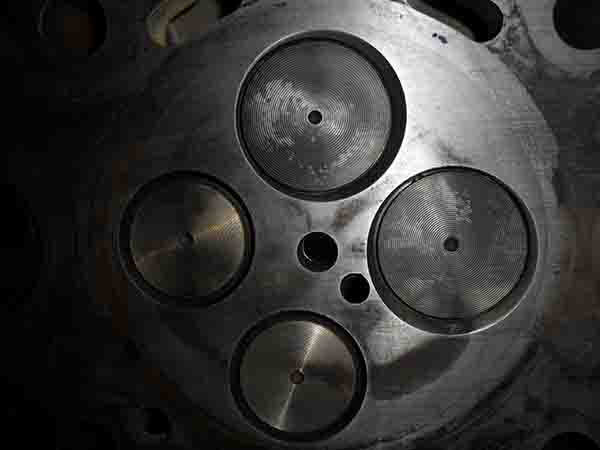godlameroso wrote: ↑20 Mar 2021, 01:02
PlatinumZealot wrote: ↑19 Mar 2021, 23:40
godlameroso wrote: ↑19 Mar 2021, 21:16
Why would there be? Again, you have to hear it to believe it.
Do you Sound of the engine?
Other cars sound similarly actually but you have to adjust your equalizer to hear. Not an accoustic engineer but whatever phiysics are in play makes the Honda sound come through more. The teams have definitlely been comparing sounds and trying things on the dyno as a result. Don't you find it intriguing why the engine manaufacturers are not commenting on the sounds of the other engines? I feel they all know what each other is doing when it comes to late combustion, exhaust flows and harmonics etc.
I am actually more interested in Honda changing the shape of the combustion chamber to make the valve steeper. This reminds of the increased tumble flow method.
If you increase compression ratio you either make the piston protrude more into the CC, or make the CC smaller and keep the piston as is. Or you do a combination of the two. Naturally to optimize the compression ratio and CC shape, as well as the port angles requires repackaging of everything in the head. Also when you consider the aero advantage of having a shorter cylinder head. By reducing the thickness of the camshaft by half you cut its strength by 400%, ditto for the camshaft girdle, so to go to the extremes Honda has made means they have absolute faith in the materials they're using.
Honda runs the wastegate open more than before, so it is natural that you would hear the engine 'more' as the turbo spends less time absorbing soundwaves.
If you reduce the bore spacing you also reduce coolant flow between the bores.
https://www.youtube.com/watch?v=X_TFlG__cH0
Look at how transparent unstable detonation is.
Just making room in the heads for the larger PC.
People just don't understand this new engine philosophy 'efficiency'
Put 25% of CC volume in the PC and that solves alot engineering headaches with very high CR with better CC control with no knock worries.
PC will have many flame outlets/ inlets ( radial and Axial.
Must get that energy out of the PC to the piston crown with minimum heat ( energy)loss
My testing showed 7 radial and 5 axial PC outlets the best with CC in piston crown. Smaller outlets radial and larger outlets axial( less pressure so less heat lost to piston crown...keep flame from hitting it)
PC doesn't have to be only an igniter
Very little CC roof angle 3 % to PC
Matching piston crown with CC dead center with high squash area around it.
New cam and valve gear design ( piston crown doesn't need valve cut outs)
I know nothing and people just laughed at a PC larger than 3-4%. They be state too much heat loss to PC walls.
Nope if that happened, you just have a bad CC design


